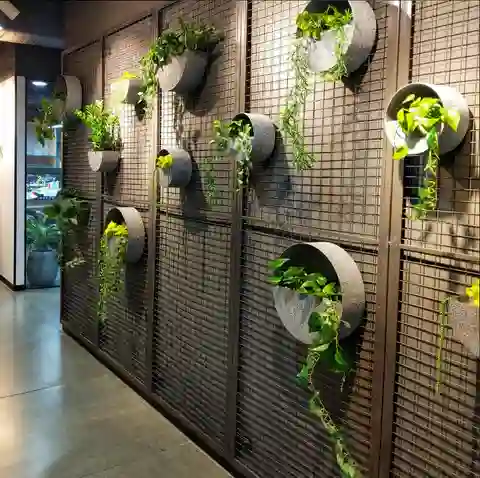How to Create Your Own Vertical Garden
How to Create Your Own Vertical Garden

How to Create Your Own Vertical Garden
A vertical garden, also known as a living wall, is a fantastic way to maximize space and bring greenery into your home or garden. Ideal for urban environments or small spaces, vertical gardens offer aesthetic appeal and can improve air quality. Here’s a guide with seven key steps to help you create your own vertical garden.
1. Choosing the Right Location
Selecting the ideal location for your vertical garden is crucial. Consider factors like sunlight, visibility, and access to water. Most plants require at least 6 hours of sunlight daily, so choose a spot that receives adequate light. If you’re using the garden indoors, consider a location near a window or use grow lights. Ensure the wall or structure can support the weight of the garden and is easy to access for maintenance.
2. Selecting the Right Structure
There are various structures you can use for your vertical garden. Options include wall-mounted planters, trellises, pocket systems, or modular planting panels. Choose a structure that suits your space and aesthetic preferences. If you’re feeling creative, you can even repurpose items like wooden pallets or old crates to create a unique vertical garden setup.
3. Choosing the Right Plants
The success of your vertical garden largely depends on the plants you choose. Select plants that thrive in your climate and suit the light conditions of your chosen location. Popular options for vertical gardens include herbs (like basil and mint), flowering plants (like petunias), and foliage plants (like ferns and philodendrons). Consider mixing different types of plants for visual interest and varied textures.
4. Preparing the Soil and Planters
Use high-quality potting soil that provides good drainage and nutrients for your plants. If you’re using a pocket system or modular panels, ensure they are designed to retain moisture while allowing excess water to drain. Fill your planters with the prepared soil, leaving enough space for your plants’ root systems. If necessary, consider adding a slow-release fertilizer to promote healthy growth.
5. Planting Techniques
When planting in your vertical garden, consider the height and light requirements of each plant. Taller plants should be placed at the top to avoid shading shorter ones. Gently remove the plants from their pots and loosen any tightly bound roots. Arrange the plants in your structure according to your design, then fill in around the roots with soil, ensuring they are secure and well-placed.
6. Watering and Maintenance
Proper watering is essential for the health of your vertical garden. Depending on the type of plants and the structure, you may need to water more frequently than traditional gardens. Check the soil moisture regularly and adjust your watering schedule accordingly. Additionally, prune your plants as needed to encourage healthy growth and prevent overcrowding. Fertilize periodically to ensure they receive adequate nutrients.
7. Enjoying and Expanding Your Vertical Garden
Once your vertical garden is established, take time to enjoy the beauty and benefits it brings to your space. Observe how the plants grow and thrive, and consider expanding your garden by adding more plants or creating additional structures. A vertical garden is not just a functional space; it’s also a dynamic, evolving work of art that can adapt to your changing tastes and preferences.
Conclusion
Creating a vertical garden is an exciting and rewarding project that allows you to bring nature into your living space while maximizing limited areas. By carefully selecting your location, structure, and plants, and by maintaining your garden, you can enjoy the beauty and benefits of a thriving vertical garden. Embrace your creativity and let your vertical garden flourish!

